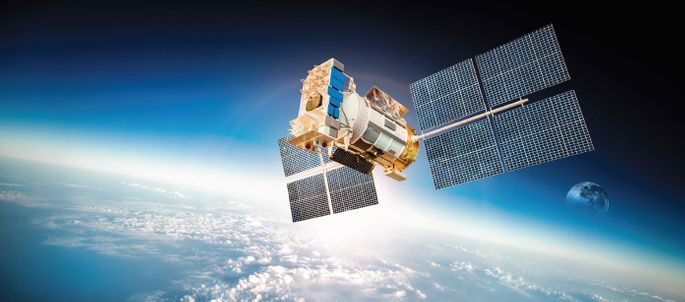Data from space
There are approximately 4000 satellites orbiting the planet at any given time and their principal function is to collect data and feed it back to earth.
Travelling at 11,300 kilometres per hour, a satellite in low Earth orbit takes only one and a half hours to fully orbit the planet. At these speeds the typical window of time available to transmit data to a terrestrial location is only 8 minutes.
In this valuable 8 minutes, anything from a few kilobytes up to a couple of terabytes can be transferred if the receiving/sending antenna is situated in a favourable location. It just so happens that the very southern tip of New Zealand’s South Island is one such location.
With the north and south poles providing the longest window of communication for satellites on a polar orbit, kiwi operation SpaceOps NZ continues to master the art of satellite data communication.
SpaceOps NZ’s CEO and Member of the New Zealand Order of Merit, Robin McNeill helped to establish the organisation in 2008 when it began as part of a joint initiative between the Southland regional development agency and the European Space Agency.
He says that in its short history, the company has evolved from hosting and maintaining antennas for customers, to building and leasing its own antennas and innovating its own technology such as a retrofit ethernet controller that improves antenna control and extends their overall lifetime.
Situated in Awarua near Invercargill, the SpaceOps NZ facility (known as a Ground Station) hosts around fifty antennas of varying sizes. The company services dozens of customers from around the world who need their satellite and launch vehicle data collected and sent to various global locations on a consistent and reliable basis.
“There are several similar sites dotted around the world, many of them as close as possible to the poles. Places such as Alaska and Norway host ground stations near the north pole.
“The rate at which satellites are launched has been steadily increasing for years as costs reduce. You can now get to space for around a million dollars which has prompted the need for increased ground segment,” says McNeill.
Now with more of its own antennas, SpaceOps NZ’s team of seven employees are actively looking to recruit more software engineers - the future is bright.
McNeill says that though there is increased demand for ground segment, the company is also well recognised in the space community for delivering the reliability and innovative thinking needed in a highly technical and challenging industry.
“Satellite technology is hugely variable with some spacecraft carrying in excess of ten-thousand sensors. When a launch vehicle enters space, the initial phase of checks include acquiring its signal and confirming that it can communicate. We then check the health and telemetry of its systems, its batteries and solar panels. Any problems or malfunctions will often give customers only one chance to record and diagnose the data. It is essential that we can deliver as much data as possible as rapidly as data transfer allows.”
Constant Uptime
The consequences of failing to download satellite data during one of the 8-minute windows can be disruptive and expensive for customers.
Beyond the loss of valuable data, calculations of the trajectory and timing of the next pass-over might also need recalculating and verifying.
To ensure reliable communication with customer satellites, a consistent and uninterrupted supply of clean power to the site is vital.
“We must have 100% power reliability to deliver certainty to our customers. Our redundant power set up means that in the event of a power outage or interruption we can deliver on operational expectations completely off-grid with diesel generators.
“We recognised early on that there needed to be an immediate backup power solution to provide sufficient power while the generators were starting up so uninterruptible power supplies (UPSs) have always been very much a part of the ground station,” says McNeill.
In the past, SpaceOps NZ customers were responsible for the backup power solutions as part of antenna leasing arrangements but after a few failures from a disparate collection of UPSs with varying brands and ages, a better and more reliable solution was required.
“We needed a complete UPS solution from someone who understood our present and future requirements. We also needed to provide our customers with 100% assurance that power would never be a problem for their operations, and we were prepared to invest in the very best – after all, the most expensive solution is the one that doesn’t work,” says McNeill.
The UPS Power Solutions team conducted a thorough site-wide audit along with detailed analysis of future loads and produced a UPS system design that catered to SpaceOps NZ’s unique requirements. The solution uses a suite of Eaton Online UPS topology and CSB batteries.
This fit-for-purpose solution can deliver uninterrupted, clean power throughout the ground station and will easily manage the full power load should a transition to off-grid generation be necessary.
“The space community is founded on excellent partnerships, information sharing and a willingness to collaborate. Its taught us that trust is crucial to good outcomes in the long term and that’s exactly what we’ve encountered with UPS Power Solutions,” says McNeill.
For more information


